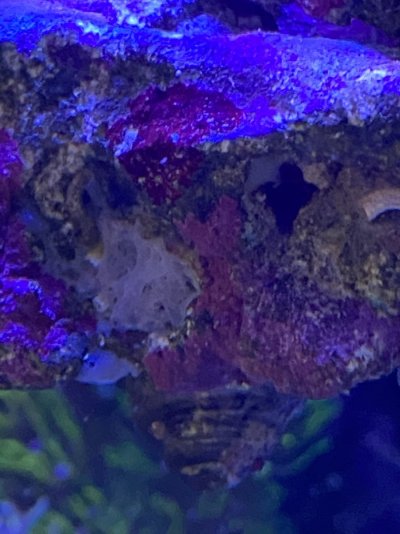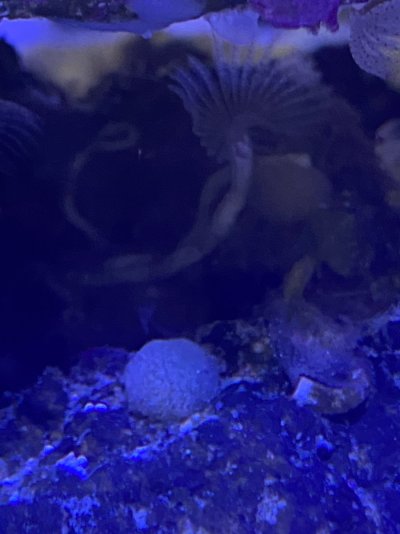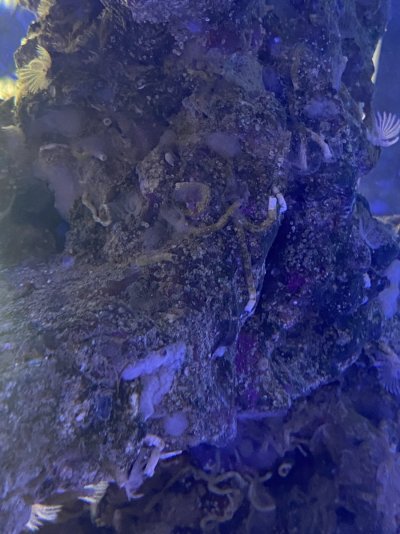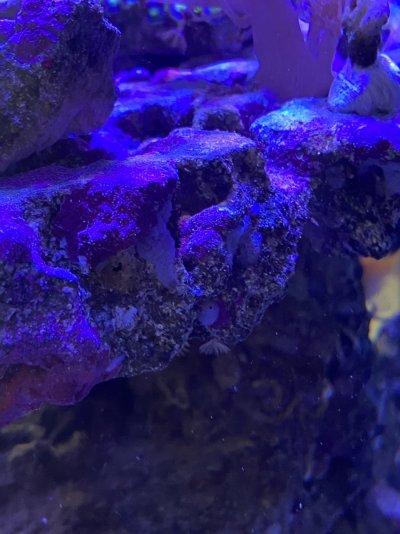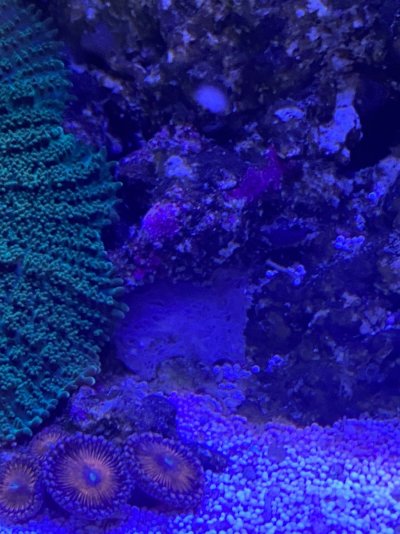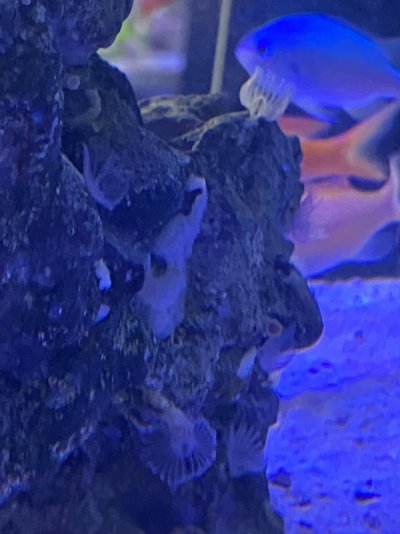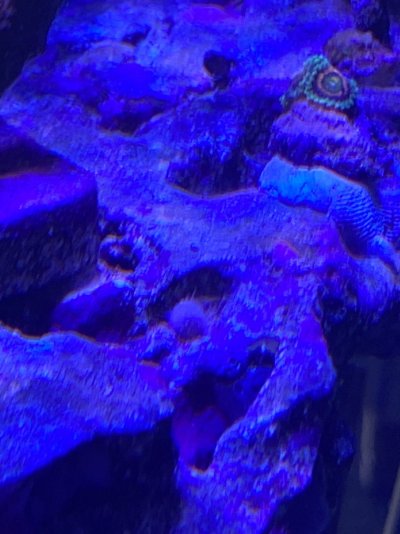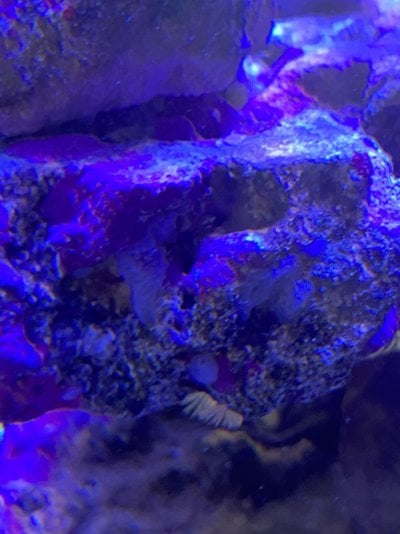Which fish that fits in a nano (125L/33g) could eat pineapple sponge, but would leave soft and LPS corals alone?
Navigation
Install the app
How to install the app on iOS
Follow along with the video below to see how to install our site as a web app on your home screen.
Note: This feature may not be available in some browsers.
More options
You are using an out of date browser. It may not display this or other websites correctly.
You should upgrade or use an alternative browser.
You should upgrade or use an alternative browser.
Sponge eater for nano
- Thread starter Brazilian Reefer
- Start date
- Tagged users None
i cant think
Wrasse Addict
View Badges
Excellence Award
Reef Tank 365
Article Contributor
UK Reef Club Member
Rock Pool Reef Keepers
My Tank Thread
My Aquarium Showcase
Honestly, I don’t believe there is any nano sponge eater. is there any specific reason you want the Pineapple Sponges to be taken out?Which fish that fits in a nano (125L/33g) could eat pineapple sponge, but would leave soft and LPS corals alone?
I'm not sure of any sponge-eater that's 100% reef safe. You might have luck with some of the smaller filefish species.
It’s starting to spread fast, specially at some points I can’t manually remove itHonestly, I don’t believe there is any nano sponge eater. is there any specific reason you want the Pineapple Sponges to be taken out?
Thanks for the tipI'm not sure of any sponge-eater that's 100% reef safe. You might have luck with some of the smaller filefish species.
i cant think
Wrasse Addict
View Badges
Excellence Award
Reef Tank 365
Article Contributor
UK Reef Club Member
Rock Pool Reef Keepers
My Tank Thread
My Aquarium Showcase
That doesn’t sound much like a pineapple sponge, do you have a photo?It’s starting to spread fast, specially at some points I can’t manually remove it
Pineapple sponges spread but they spread as singular small tubes.
Check it outThat doesn’t sound much like a pineapple sponge, do you have a photo?
Pineapple sponges spread but they spread as singular small tubes.
Attachments
Those are sponges, but not pineapple sponges (which come from the genus Sycon, are shaped like a tube, and often have a little "crown" going around the big opening; between the tube-shape and the crown, they look somewhat like little white pineapples).Check it out
With regards to the sponge control, manual removal is almost always going to be the best method at present (TLDR at bottom):
TLDR; Aquilonastra starfish (known as Asterina starfish in the hobby) are probably your best bet, and there's no guarantee they'll eat the sponge at all or that they won't eat any corals.Lots of things will eat sponges, but I don’t know if any of them (that won’t starve like nudibranchs would) are totally reef-safe - almost anything that might eat sponges are a risk to corals too (and, in some cases, inverts as well). Beyond that, not every sponge eating critter will eat every sponge, so there’s no guarantee any critter you get would eat the sponges you want them to.
To quote another of my posts:
Manual removal is almost certainly your best option here (for why, see the first quote below, for manual removal control ideas, see the other two):
Just to put this out there - the problem with using biological controls (i.e. something that eats it) with sponges is that there are a ton of different sponges, some of which look indistinguishable from others. Some of these sponges are inedible or extremely undesirable foods to some species (either because of chemical defenses* or just because of taste preferences) while being highly desirable to other species. So, even if you pull in a known sponge-eating species of fish/starfish/whatever, there's no guarantee it will eat the sponge you want it to eat. Also, many of these sponge-eating species eat other things (like coral) that you might not want them eating.
Long story short, manual removal is probably your best option for sponges until more study has been on both specific sponges and specific sponge-eaters, but you can try it if you want.
*Just as a note on the chemical defenses of sponges, many sponges produce chemicals to avoid being eaten. Some of these chemicals are more generalized, some of them are specifically anti-fish, some are specifically anti-echinoderm (starfish, urchin, etc.), etc. So, again, some things might eat one sponge but not another, and because of the whole indistinguishable thing mentioned above, the sponges that are and are not being eaten may look pretty much identical (some may be distinguished/ID'ed under microscopic investigation, others may need to be DNA tested to be distinguished/ID'ed).
Just my two cents here.The best way I've heard to control sponge growth at this point is to use a steel straw to scrape and siphon out the sponge you want to remove. Sometimes you can create bad conditions for them and kill them off that way, but that's typically much harder and not always effective.
Some other sponge removal methods:Other suggestions include exposing the sponge to air (obviously not a guaranteed solution, and definitely not viable for this situation); hydrogen peroxide dipping the sponge (again, not viable here); injecting the sponge with hydrogen peroxide, vinegar, boiling water, or air; microbubbles in the display; and a few more. Predation is not usually a good solution for this issueAll of that said, if you’re really determined to try biological controls (i.e. predation) for your sponges, here are some known sponge eaters you might be able to find in the hobby:Basically, if the sponges have enough food and enough trace elements (which for most sponges includes silicates) to meet their needs, then you’ll see their populations booming.
If you can figure out what’s allowing them to thrive in your tank, then you can deal with that root cause and get rid of them.
-Angelfish (particularly large angels, from what I’ve seen)
-The pencil urchin Eucidaris tribuloides*
-Starfish (quite a few different species eat sponges, but not all of them do; aside from Aquilonastra starfish - known in the hobby as Asterina starfish - starfish have abysmal survival rates past ~8-13 months, so I’d suggest to avoid these)
-Moorish Idols (these have abysmal survival rates pretty much regardless of how long they’ve been in captivity, so I can’t recommend them either)
-Nudibranchs (they only eat like 1 to 4 specific species of sponge total, and they will not branch out beyond those species - please do not buy these, they will starve)
-Some trunkfish and (typically large) filefish reportedly eat sponges (and inverts)
I’m sure there are some other species I’ve missed (particularly fish species), but that pretty well covers the known sponge eaters.
*Info on the pencil urchin diet:

Thank youThose are sponges, but not pineapple sponges (which come from the genus Sycon, are shaped like a tube, and often have a little "crown" going around the big opening; between the tube-shape and the crown, they look somewhat like little white pineapples).
With regards to the sponge control, manual removal is almost always going to be the best method at present (TLDR at bottom):
TLDR; Aquilonastra starfish (known as Asterina starfish in the hobby) are probably your best bet, and there's no guarantee they'll eat the sponge at all or that they won't eat any corals.
Similar threads
- Replies
- 7
- Views
- 554
- Replies
- 15
- Views
- 494





